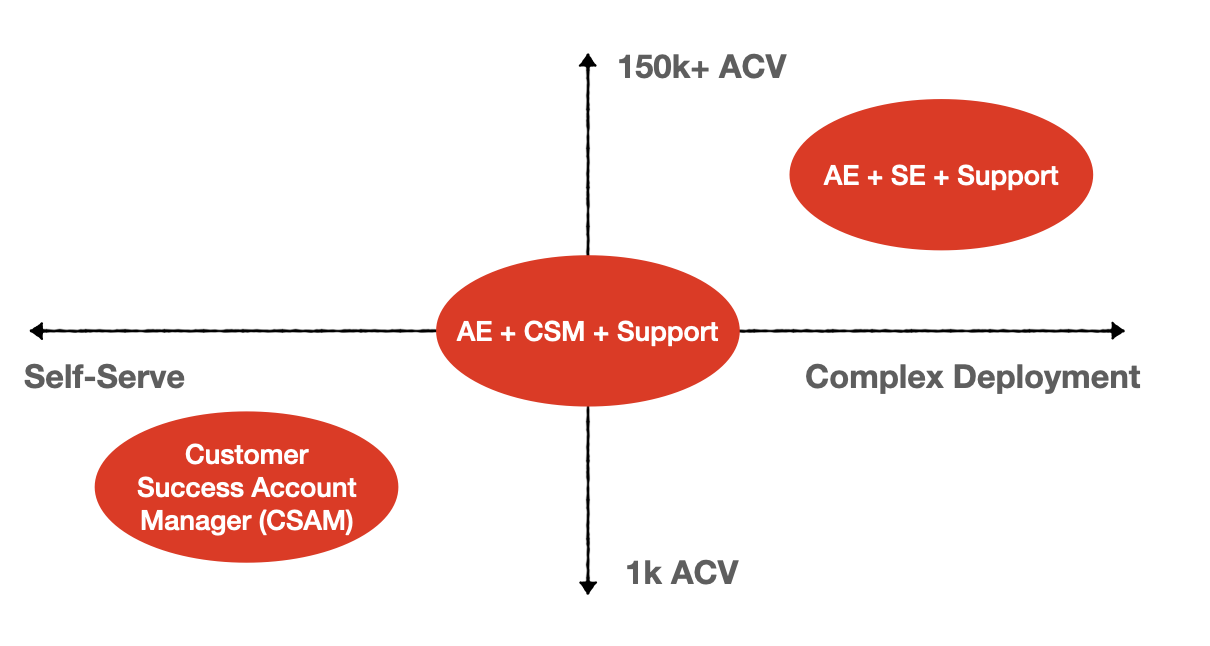A decade ago, Gainsight championed the creation of the customer success category. People curious and passionate about customer success convened at the Pulse conference to debate customer success. In 2013 and 2015, the discipline’s merits dominated the conversation. Soon thereafter, the most common question became how to build and run a CS team, replacing why start a CS team.

Ten years hence, customer success continues to evolve. Today, practitioners have segmented themselves into three types of teams.
The chart above is my mental model for modern customer success teams. The y-axis spans the average contract value (ACV) from $1k to 150k+. The x-axis covers the sales motion from self-serve, to sales-assisted in the center, to complex deployments.
Self-serve small ACV companies have developed the hybrid CSAM role ( customer success account managers). Ideal for freemium low-ACV startups and some PLG-motions, CSAMs shoulder the responsibility of both technical support and account expansion. Users sign up, use the product, raise questions, and at some point raise their hands with an American Express ready to swipe it. CSAMs handle it all.
Mid-market companies with moderate sales involvement and configuration surround the customer with three people. First, the account executive closes the sale, then transfers the relationship to the CSM for retention and expansion. The customer support team tackles the technical questions. This is the classical customer success team structure.
Higher ACV and complex deployment businesses have experimented with 4 people surrounding an account: the AE, SE (sales engineer) who implements and configures the software for a customer, the support team, and a customer success manager.
Of late, enterprise startups have trimmed the CS function, reducing the team size to three. Notably, Frank Slootman re-architected Snowflake’s go-to-market organization this way. He writes in Amp It Up:
“If you have a customer success department, that gives everyone else an incentive to stop worrying about how well our customers are thriving with our products and services…this had the effect that the other departments sat back, became more passive, and felt less ownership of customer success (p 100).”
AEs targeting larger accounts most often close a single department first. Expanding from this team to another requires a subsequent sales process. Blanketing the buyer with an SLA requires yet another sales process – the domain of the sales team.
Account executives are better suited to this task than the typical CSM. Plus, the ultimate value of enterprise accounts often exceed $1m ARR. Such a prize justifies an AE’s ongoing focus on expansion and enables the AE to attain quota of 1.2m to 1.6m in ACV per year when managing a handful of these accounts. Last, this structure reduces the startup’s costs assuming the customers as satisfied as before.
This segmentation is a rough mental model and exceptions abound, especially when companies sell across segments. A startup might use two or three of these models to serve customers of different sizes through various sales motions.